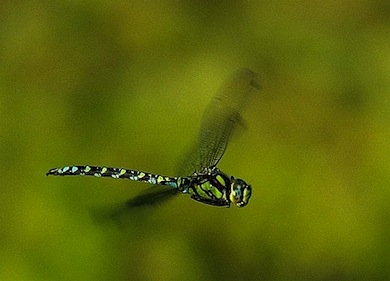Mile End Park is a long, linear site on the banks of the Regent’s Canal, stretching from Victoria Park to St. Paul’s Way. The park has been built up over many years, much of it on land gradually acquired from old housing and industrial areas. The park was rejuvenated at the turn of the Millennium, with new elements added and the previously separated parts drawn together and made far more accessible. The site is made up of linked areas of amenity and herb-rich grassland habitat, with numerous trees, discreet areas of woodland and scrub and formal planted beds of aromatic and nectar-rich herbs. Wetland features have been created in three sections of the park. There are a number of imaginative features which give it additional interest, including the Green Bridge, which provides a pleasant means of crossing the very busy Mile End Road, and the landscaped mounds which provide good views. The park is well laid out with formal and informal paths, including separate cycle paths, and has numerous seats. The park is always open and accessible from numerous points, including the canal towpath. The paths have a good surface and are well-graded, making it wheelchair accessible. The park is widely seen as an exemplar of how to incorporate large areas of wildlife habitat into a popular and well-used urban park. It won a Green Flag Award again in 2024. Tower Hamlets Healthy Walkers project uses this site as part of Walking the Way to Health (WHI) scheme.
Local Wildlife Site
Accessible Sites of Importance for Nature Conservation
Mile End Park
Borough: Tower Hamlets
Grade: Metropolitan
Access: Free public access (all/most of site)
Area: 22.66 ha
Description
Wildlife
Trees on the site include Norway maple, London plane, lime, silver birch, ash and a few black poplars. The wetland features include a naturalistic area supporting aquatic plants (both native and exotic) and a water-feature with water flowing between concrete-sided pools. These support a large population of common toads, as well as common frogs and smooth newts. The species-rich grasslands support a diversity of colourful wildflowers and are managed as meadows, supporting a diverse range of invertebrates. Over 400 species of beetles have been recorded, including the streaked bombardier beetle, currently known from only one other British site. Over 100 species of spiders include several rare species, including two new to Britain. The presence of scrub and trees, many well-established, with some new planting, provides a mosaic of habitats, and the siting of scrub around amenity grasslands provides good habitat.Facilities
Information; car parking; cycle paths; playground
Southern hawker dragonfly © Stephen Frank
Feedback
Have a question or a comment for this site, or notice anything missing or out of date? Please contact us.
